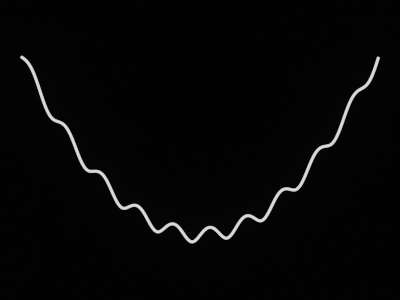HUD & UI Sin Element
Main Parameters
Length: Defines the size (or length) of the sine wave.
Subdivisions: Sets the number of subdivisions or bars along the sine wave.
Domain: Defines how far the domain of the sine wave extends.
Angle Offset: Offsets the starting angle of the domain.
Y Offset: Offsets the sine wave's position along the y-axis.
Y Scale: Scales the sine wave along the y-axis.
Centered Along X: Centers the sine wave along the x-axis.
Flip Along Y: Flips the sine wave along the y-axis.
Visualization
Line: Displays the sine wave as a line.
Surface: Displays the sine wave as a surface.
Bars: Displays the sine wave as bars.
Ngons: Displays the sine wave as a series of ngon nodes.
Note: Combining Line & Surface, Ngons & Surface, or Line & Ngons will display both visualizations simultaneously.




Visualization Parameters
Thickness: Specifies the line thickness.
Width: Defines the base size of the bars.
# Sides: Sets the number of sides for each ngon node.
Radius: Defines the radius of each ngon node.
Angle: Sets the angle offset for each ngon node.
Limits
Y Upper Limit: Defines the upper limit for the sine wave values.
Y Lower Limit: Defines the lower limit for the sine wave values.
Function
Linear: Uses a linear function of the form (ax + b) as the base for the sine wave.
Quadratic: Uses a quadratic function of the form (ax2 + bx + c) as the base for the sine wave.
Cubic: Uses a cubic function of the form (ax3 + bx2 + cx + d) as the base for the sine wave.
Exponential: Uses an exponential function of the form (ax) as the base for the sine wave.




Function Parameters
a: Float value (for Exponential function, the lower limit is 9.99995e-41).
b: Float value.
c: Float value.
d: Float value.
X Values Offset: Sets the offset for x values in the function.
Transitions
Angle: Uses the angle parameter to create an incoming transition.
Y Scale: Uses the y-axis scaling to create an incoming transition.
Y Offset: Uses the y-axis offset to create an incoming transition.
Thickness: Uses the line thickness to create an incoming transition.
Note: Multiple intro types can be combined to apply all transitions simultaneously.




Transitions Parameters
Start Frame: Defines the start frame of the introduction.
Length: Defines the duration of the introduction.
Evolution
Angle Speed: Creates continuous animation by incrementing the domain (angle) over time.
Offset Angle Speed: Creates continuous animation by incrementally offsetting the domain over time.



